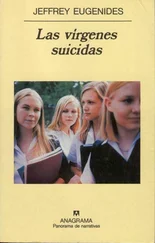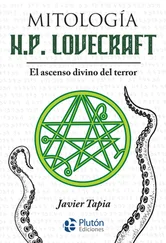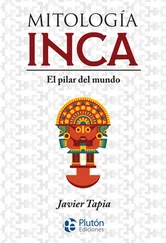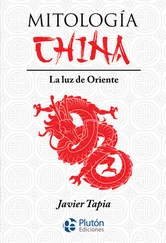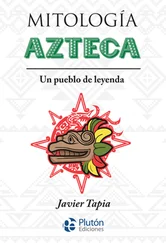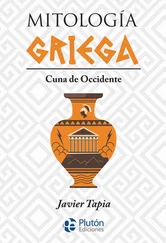In his office Luce got straight to the point. “Let me review the facts of your daughter’s case,” he said. Tessie noted the change at once. Daughter. He had said “daughter.”
The sexologist was looking reassuringly medical that morning. Over his cashmere turtleneck he wore an actual white coat. In his hand he held a sketchpad. His ballpoint pen bore the name of a pharmaceutical company. The blinds were drawn, the light low. The couples in the Mughal miniatures had modestly covered themselves in shadow. Sitting in his designer chair, with tomes and journals rising behind him, Dr. Luce appeared serious, full of expertise, as was his speech. “What I’m drawing here,” he began, “are the fetal genital structures. In other words, this is what a baby’s genitals look like in the womb, in the first few weeks after conception. Male or female, it’s all the same. These two circles here are what we call the all-purpose gonads. This little squiggle here is a Wolffian duct. And this other squiggle is a Müllerian duct. Okay? The thing to keep in mind is that everybody starts out like this. We’re all born with potential boy parts and girl parts. You, Mr. Stephanides, Mrs. Stephanides, me—everybody. Now”—he started drawing again—“as the fetus develops in the womb, what happens is that hormones and enzymes are released—let’s make them arrows. What do these hormones and enzymes do? Well, they turn these circles and squiggles into either boy parts or girl parts. See this circle, the all-purpose gonad? It can become either an ovary or a testis. And this squiggly Müllerian duct can either wither up”—he scratched it out—“or grow into a uterus, fallopian tubes, and the inside of the vagina. This Wolffian duct can either wither away or grow into a seminal vesicle, epididymis, and vas deferens. Depending on the hormonal and enzymatic influences.” Luce looked up and smiled. “You don’t have to worry about the terminology. The main thing to remember is this: every baby has Müllerian structures, which are potential girl parts, and Wolffian structures, which are potential boy parts. Those are the internal genitalia. But the same thing goes for the external genitalia. A penis is just a very large clitoris. They grow from the same root.”
Dr. Luce stopped once more. He folded his hands. My parents, leaning forward in the chairs, waited.
“As I explained, any determination of gender identity must take into account a host of factors. The most important, in your daughter’s case”—there it was again, confidently proclaimed—“is that she has been raised for fourteen years as a girl and indeed thinks of herself as female. Her interests, gestures, psychosexual makeup—all these are female. Are you with me so far?”
Milton and Tessie nodded.
“Due to her 5-alpha-reductase deficiency, Callie’s body does not respond to dihydrotestosterone. What this means is that, in utero, she followed a primarily female line of development. Especially in terms of the external genitalia. That, coupled with her being brought up as a girl, resulted in her thinking, acting, and looking like a girl. The problem came when she started to go through puberty. At puberty, the other androgen—testosterone—started to exert a strong effect. The simplest way to put it is like this: Callie is a girl who has a little too much male hormone. We want to correct that.”
Neither Milton nor Tessie said a word. They weren’t following everything the doctor was saying but, as people do with doctors, they were attentive to his manner, trying to see how serious things were. Luce seemed optimistic, confident, and Tessie and Milton began to be filled with hope.
“That’s the biology. It’s a very rare genetic condition, by the way. The only other populations where we know of this mutation expressing itself are in the Dominican Republic, Papua New Guinea, and southeastern Turkey. Not that far from the village your parents came from. About three hundred miles, in fact.” Luce removed his silver glasses. “Do you know of any family member who may have had a similar genital appearance to your daughter’s?”
“Not that we know of,” said Milton.
“When did your parents immigrate?”
“Nineteen twenty-two.”
“Do you have any relatives still living in Turkey?”
“Not anymore.”
Luce looked disappointed. He had one arm of his glasses in his mouth, and was chewing on it. Possibly he was imagining what it would be like to discover a whole new population of carriers of the 5-alpha-reductase mutation. He had to content himself with discovering me.
He put his glasses back on. “The treatment I’d recommend for your daughter is twofold. First, hormone injections. Second, cosmetic surgery. The hormone treatments will initiate breast development and enhance her female secondary sex characteristics. The surgery will make Callie look exactly like the girl she feels herself to be. In fact, she will be that girl. Her outside and inside will conform. She will look like a normal girl. Nobody will be able to tell a thing. And then Callie can go on and enjoy her life.”
Milton’s brow was still furrowed with concentration but from his eyes there was light appearing, rays of relief. He turned toward Tessie and patted her leg.
But in a timid, breaking voice Tessie asked, “Will she be able to have children?”
Luce paused only a second. “I’m afraid not, Mrs. Stephanides. Callie will never menstruate.”
“But she’s been menstruating for a few months now,” Tessie objected.
“I’m afraid that’s impossible. Possibly there was some bleeding from another source.”
Tessie’s eyes filled with tears. She looked away.
“I just got a postcard from a former patient,” Luce said consolingly. “She had a condition similar to your daughter’s. She’s married now. She and her husband adopted two kids and they’re as happy as can be. She plays in the Cleveland Orchestra. Bassoon.”
There was a silence, until Milton asked, “Is that it, Doctor? You do this one surgery and we can take her home?”
“We may have to do additional surgery at a later date. But the immediate answer to your question is yes. After the procedure, she can go home.”
“How long will she be in the hospital?”
“Only overnight.”
It was not a difficult decision, especially as Luce had framed it. A single surgery and some injections would end the nightmare and give my parents back their daughter, their Calliope, intact. The same enticement that had led my grandparents to do the unthinkable now offered itself to Milton and Tessie. No one would know. No one would ever know.
While my parents were being given a crash course in gonadogenesis, I—still officially Calliope—was doing some homework myself. In the Reading Room of the New York Public Library I was looking up something in the dictionary. Dr. Luce was correct in thinking that his conversations with colleagues and medical students were over my head. I didn’t know what “5-alpha-reductase” meant, or “gynecomastia,” or “inguinal canal.” But Luce had underestimated my abilities, too. He didn’t take into consideration the rigorous curriculum at my prep school. He didn’t allow for my excellent research and study skills. Most of all, he didn’t factor in the power of my Latin teachers, Miss Barrie and Miss Silber. So now, as my Wallabees made squishing sounds between the reading tables, as a few men looked up from their books to see what was coming and then looked down (the world was no longer full of eyes), I heard Miss Barrie’s voice in my ear. “Infants, define this word for me: hypospadias . Use your Greek or Latin roots.”
The little schoolgirl in my head wriggled in her desk, hand raised high. “Yes, Calliope?” Miss Barrie called on me.
Читать дальше
Конец ознакомительного отрывка
Купить книгу

